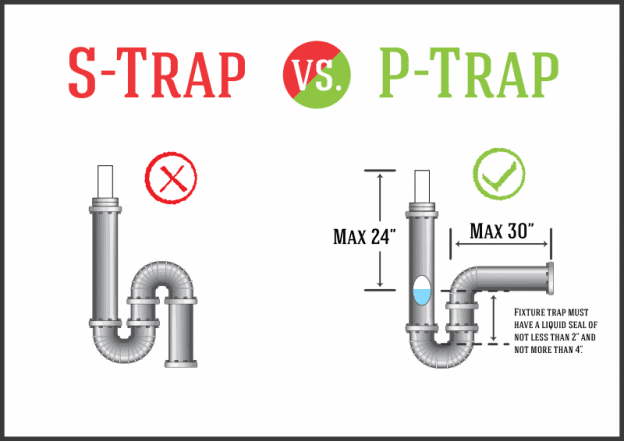Drain Traps
What’s an “S-Trap”?
An S-Trap is basically shaped like the letter “S” and is usually installed sideways. The problem with S-Traps is that they don’t do a good job of keeping sewer gas from leaking into your home. In fact, they’re banned under the Uniform Plumbing Code all across the U.S. because they can suck the water out of the trap when wastewater flows through, allowing those nasty sewer smells to creep into your living space.

What’s a “P-Trap”?
A P-Trap is a better design with two key features that prevent siphoning:
Vented Pipe: A P-Trap usually has a vent that goes inside the wall and up through the roof, or it connects to an Air Admittance Valve (AAV). This helps balance air pressure in the drain, which reduces the chance of siphoning.
Waste Arm Extension: It includes an extension on the drain side, called a waste arm extension. This makes it way less likely for gravity to pull wastewater through the pipe too quickly.
One Note on P-Traps
It’s worth mentioning that the water in a P-Trap can still evaporate over time. There’s no foolproof way to prevent a trap from drying out completely. If you have a sink you don’t use often, the trap can dry out, so it’s a good idea to run some water down the drain every now and then to keep it from happening.
Switching from an S-Trap to a P-Trap
If you want to upgrade from an S-Trap to a P-Trap, there are several ways to do it, including conversion kits. Sometimes you might need a custom setup. Most home improvement stores have a solid plumbing section where you can find everything you need to make the switch